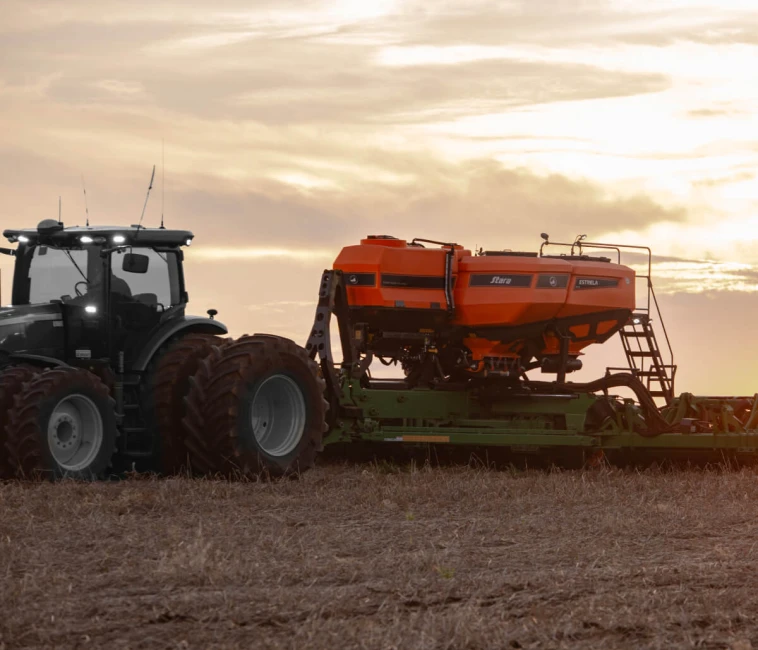Choosing the perfect planter for your farm means to ensure the precise placement of the seeds, getting the most out of the inputs and higher operating efficiency. But with so many options in the market, how can you be sure of the best planter for your crop field?
Factors such as placement uniformity, compatibility with the tractor and on-board technology on the agricultural machine may directly impact on yield.
The agronomist engineer Matheus Henrique Baumgratz, Product Marketing Analyst, lists the seven main factors that should be considered when choosing the best planter for your crop field.
Check out the highlights indicated by the expert:
1. Crop Type
The first step is to choose which crops will be sowed. Planters for summer crops are engineered for larger seeds, such as soybeans, corn, cotton, and beans, which demand high placement precision.
For this crop type, the planters should feature pneumatic meter units, spacing from 45 to 50 cm and robust to cut the straw.
On the other hand, for winter crops, such as wheat, oats and barley, seeders are required: with shorter spacing between row units and a meter system per kilo per hectare (kg/ha), carried out by rotors. The seeds are smaller with shorter spacing (17 cm).
Learn more: Stara Planters and Seeders Line
2. Size and characteristics of the planting area
The farm size is crucial when choosing the planter configuration, especially when it comes to the number of row units. Additionally, the soil type and characteristics are essential.
Bumpy terrains, for example, demand agricultural machines with higher hinge capacity and systems that ensure the planting uniformity from end to end. Adjusting the planter correctly is crucial to boost the grain planting performance.
3. Compatibility between the tractor and planter
It’s crucial to check the compatibility between the planter and tractor. It includes the power required by the implement and the hydraulic demand required to operate all the machine systems, such as the vacuum blowers and lifting cylinders.
4. Logistics and Transport through the farm
The travelling logistics among fields should be considered. For further farms or on narrow roadways and gates, choose fast transport systems that reduce the agricultural machine width.
This type of mechanism is crucial to optimize time and ensure safety. The Stara Eva planter, available from 7 to 11 row units, was developed to make the operation faster and ease the transport.
5. Hopper Capacity of the planters
The agricultural equipment autonomy is directly connected to the seed and fertilizer hoppers capacity. Planters with a higher capacity result in less stops for supplying, which significantly increases the daily operating yield.
6. On-board agricultural technology
The Precision Agriculture technologies have transformed the planting, allowing the savings of inputs and the soil preservation during the operations in the field.
Resources such as the Row-by-Row Shut-Off System and Curve Compensation are useful tools to save seeds, avoid the planting overlap and boost yield.
7. Maintenance of agricultural machines and easy assistance
Planters always need to be available during the sowing season. For this reason, the fast agricultural maintenance is an essential factor.
In addition, having qualified technical assistance of a close dealer with trained technicians and a complete stock of genuine spare parts is crucial to solve any unexpected issue quickly.
Learn more: Five reasons to have the maintenance performed on agricultural machines
Mechanical or pneumatic planter: which one is the best?
When searching for the most suitable planter model to your farm needs, one of most important technical decisions is choosing the seed distribution system, which could be mechanical or pneumatic. Compare the difference:
-
Mechanical planters
Using discs with holes that select and place the seeds by gravity. Although they are simpler, they are more subjected to failures, irregular spacing, especially at high speeds.
This model also requires special care. The Stara agronomist engineer Matheus Baumgratz recommends:
For farmers that use mechanical planters, it is important to perform the recommended agricultural maintenance services lubrication and inspection of the planter items to ensure a good planting process frequently.
-
Pneumatic planters
With on-board technology, they use an air stream (vacuum or pressure) to select and place the seeds to the soil individually. The result is higher precise and uniform placement, even under different operation conditions.
The pneumatic meter ensures seed planting to the correct spacing, which is crucial for crops, such as corn and soybeans, where the competition between near plants may reduce the yield significantly.
About the pneumatic planters, the engineer highlights:
For excellent planting quality, calibrate the products correctly (seed and fertilizer), adjust the ideal seed depth and implement levelling. Additionally, you need to check the cutting discs springs, the wear level, the soil type, and the fertilizer row unit configuration to be used (turbo disc, double discs, furrow opener). Matheus Baumgratz, Stara Product Marketing Analyst.
In general, when choosing between pneumatic or mechanical planters, it’s worth to consider the yield expectation, according to the expert.
If the seed placement uniformity is not in question, it excels by using the pneumatic systems.
Stara planting solutions: planter types for sale
Each Stara planter model meets a crop field profile. Check out the main different features:
Eva planter
Pneumatic model for summer crops, the planter with 7 to 11 row units is recommended for corn, soybeans, beans, sorghum, and millet.
The Stara Eva planter is known for being robust and no lubrication required during the planting process thanks to the shielded roller bearings and self-lubricating bushings.
One of its innovations is the options to be controlled by smartphone with Bluetooth®, which allows to calibrate the implement directly by the application, and the traditional configuration having a Stara controller - Topper 5500 VT.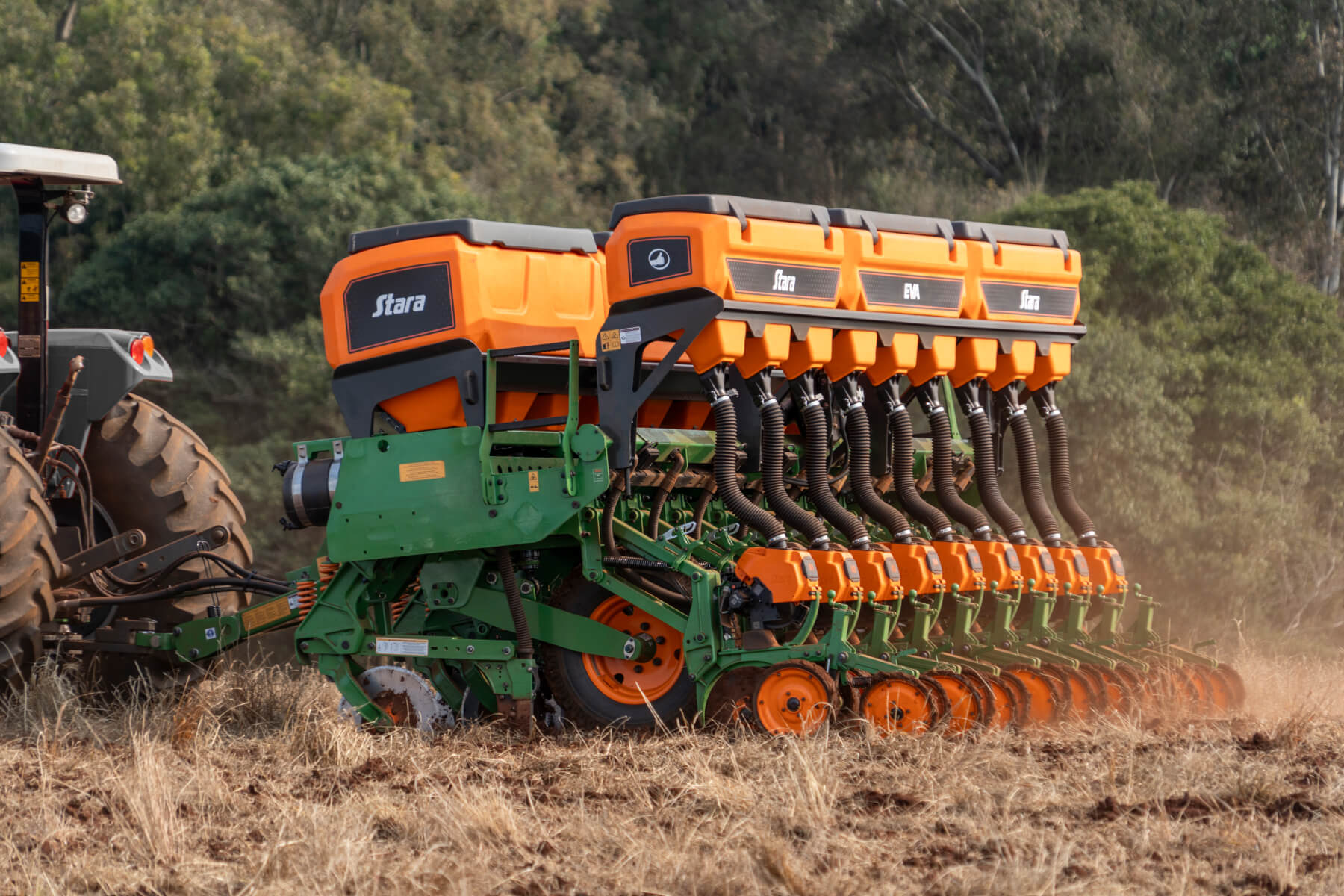
Cinderela Planter
Planter with 9 to 17 row units. Perfect for corn, soybeans, beans, and cotton.
The Stara Cinderela planters provide excellent plantability for summer crops. As its chassis has a great hinge capacity (27°), it allows better terrain copy, ensuring planting uniformity even on bumpy terrains.
It’s available on Cinderela configuration with a seed hopper by gravity, and Cinderela Top with a central hopper. It is known for the excellent straw flow, with cutting discs in 20 inches that require less tractor power.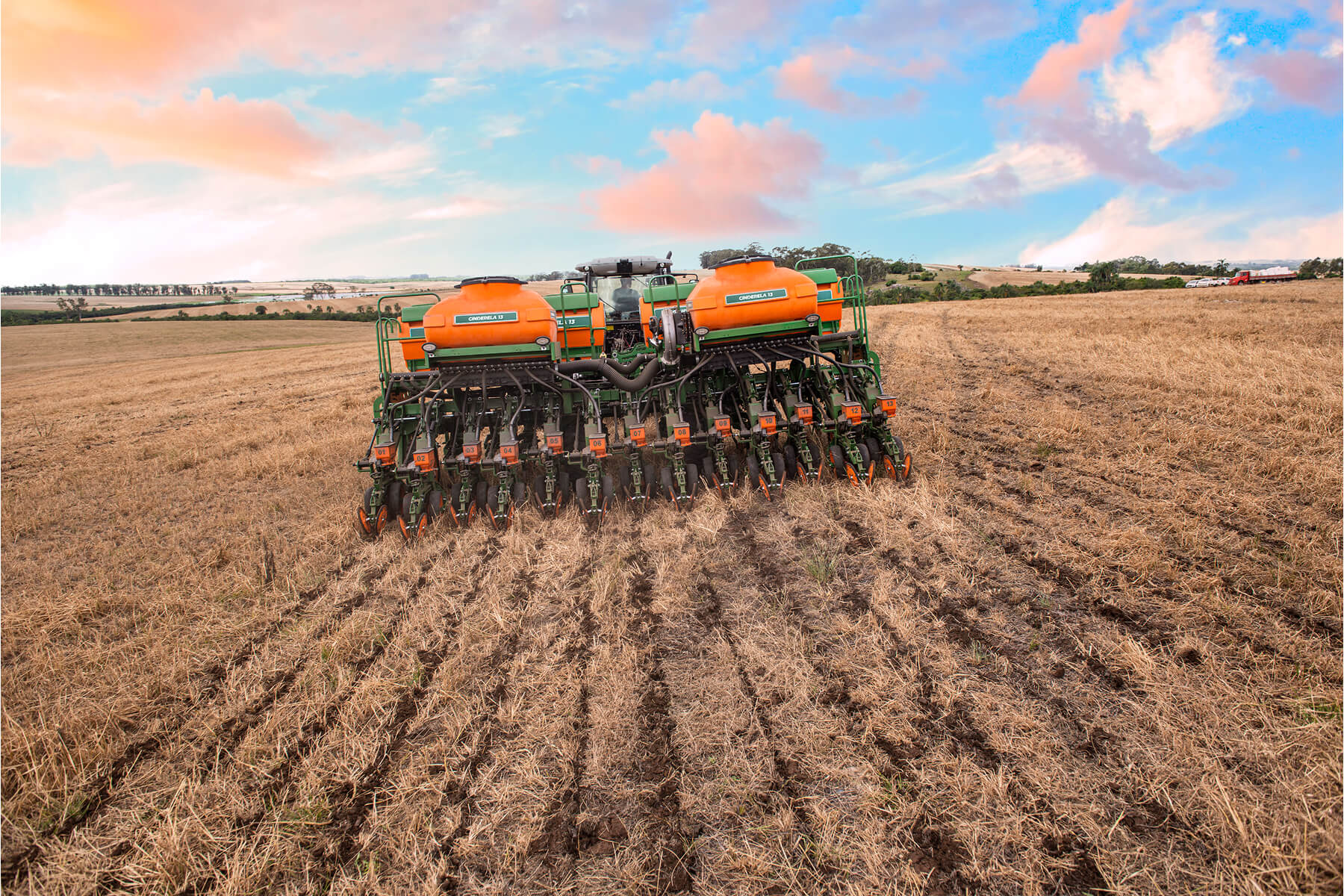
Princesa Planter
Planter with 12 to 20 row units with high autonomy and excellent terrain copy.
The Stara Princesa planters are known for the planting precision and practical transport. Having a hinged side folding system, it easily travels through narrow roadways and gates.
It is available in two models: Princesa DPS with seed hopper by gravity and Princesa Top with a central hopper. The great hinge capacity of the chassis provides excellent terrain copy, ensuring the planting uniformity even on bumpy terrains.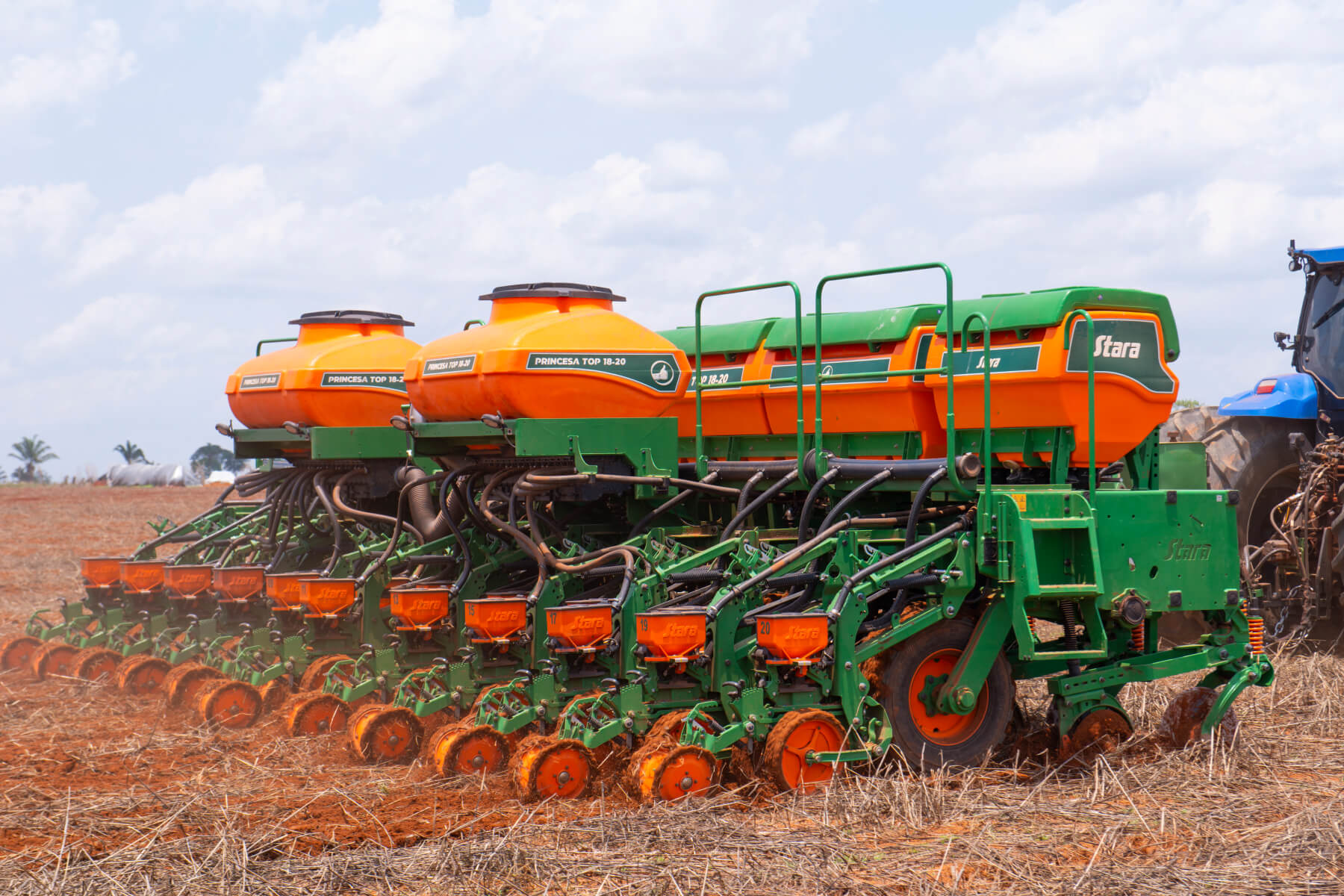
Estrela Planter
Planter with 18 to 21 row units. It’s considered the most comprehensive planter in the market. Estrela gathers fast transport with exclusive technology. Planter with 18 to 21 row units.
One of the main differential features of the Stara Estrela planters is the Stara Integrated Terrain Copy System, a triple point system with hinge that ensures the best plantability of the category.
It is also factory equipped with the in-furrow spraying system without the need for adaptations. Estrela has pressurized central hoppers for seeds and fertilizers, and the efficient DPS-E meter, which ensures the best singularity of the market.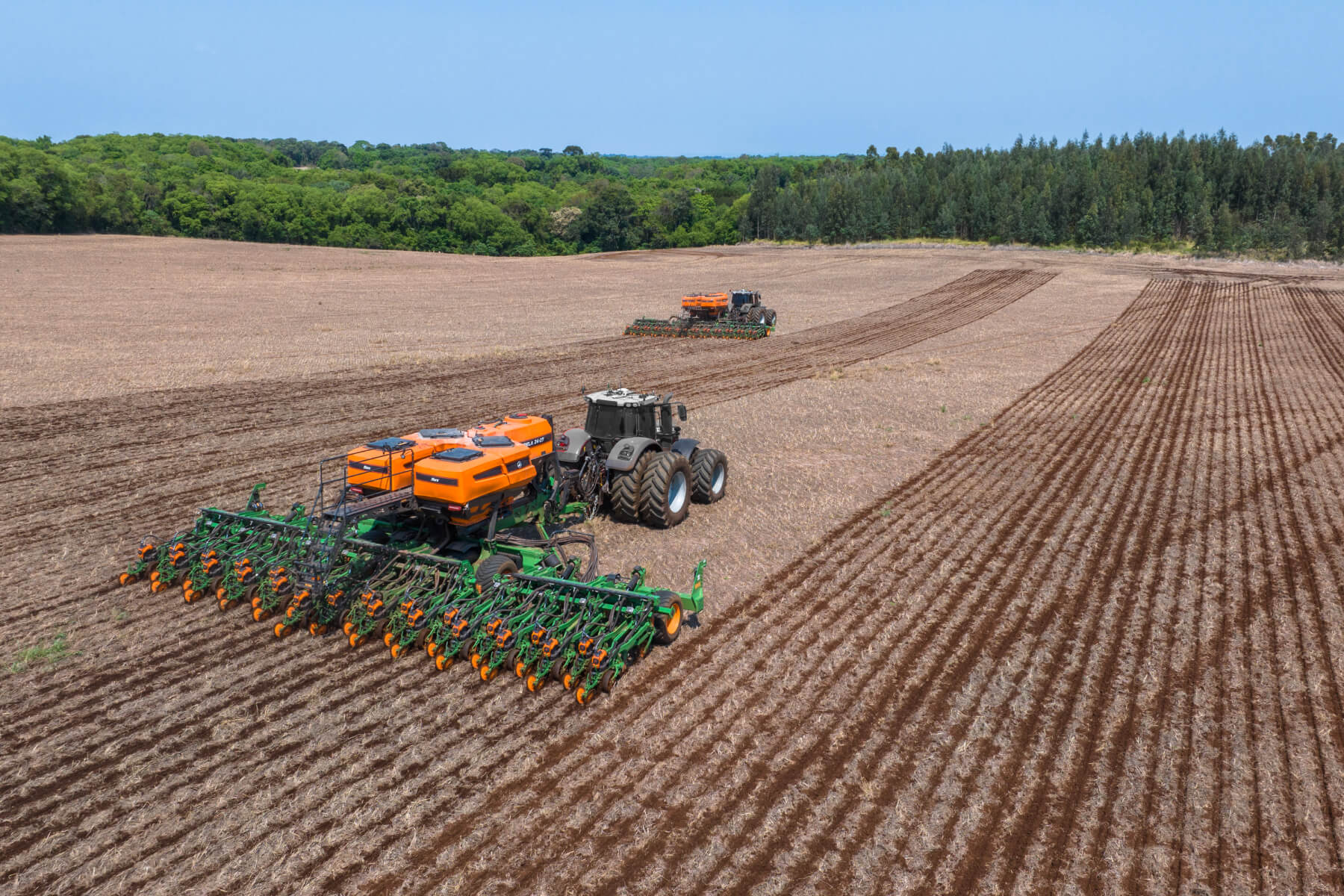
Absoluta Planter
Planter with 26 to 61 row units. Engineered for larger areas, Absoluta is the perfect choice for those who seek the maximum operating yield.
The Stara Absoluta planters are recommended for areas where the soil fertilization is carried out in a separate operation, as it has a big central hopper for seeds only with a capacity of up to 8,130 litres.
Its chassis hinged in 5 or 7 modules, with a pneumatic springs system, distributes the weight with uniformity and provides a superior terrain copy, ensuring an efficient planting from end to end.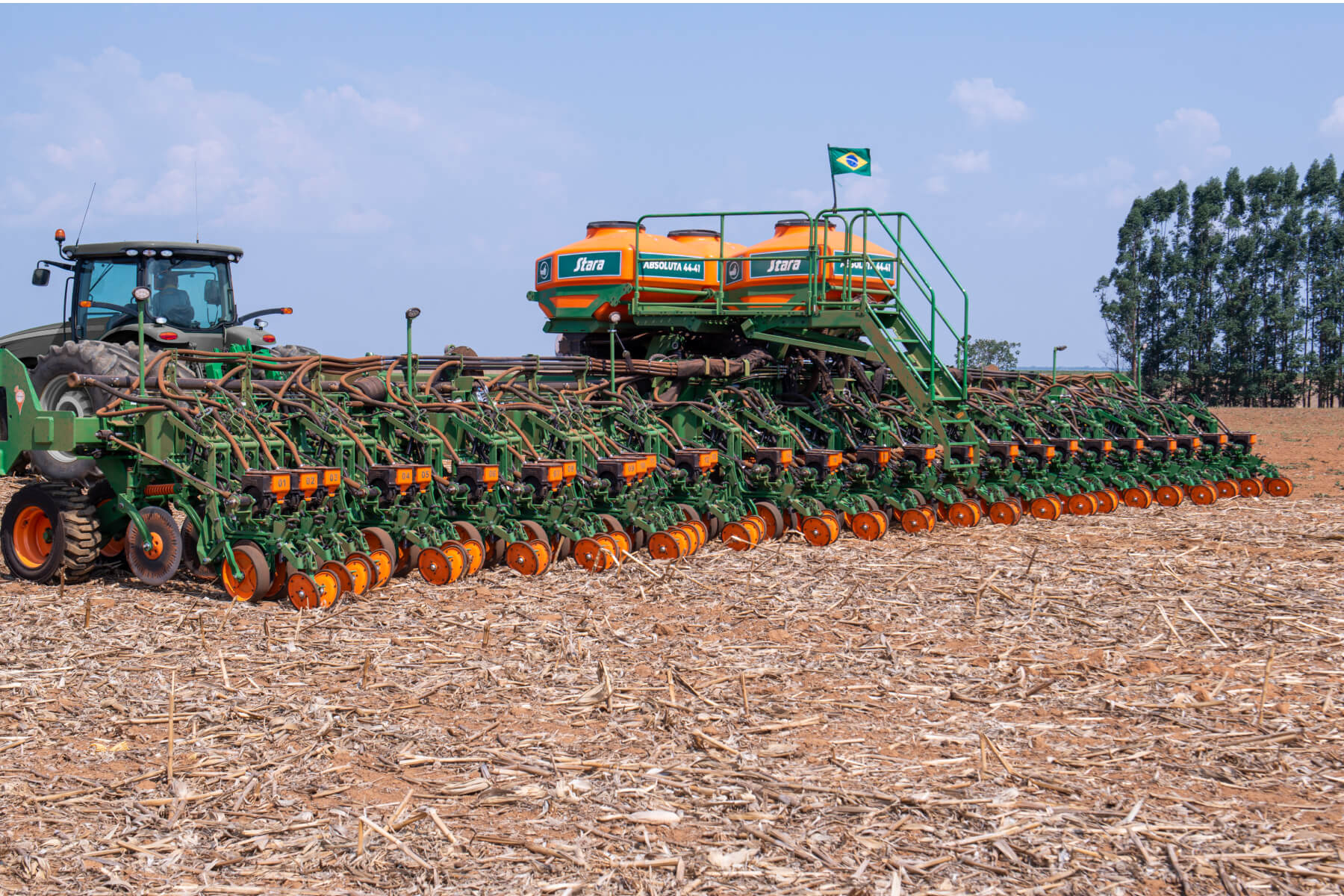
Different size of the planter according to the number of row units: Stara models
The relation between the area size and number of row units of the planter impacts the operating yield.
For this reason, choosing the number of row units should be a strategy math that considers not only the total size of the area, but also the time available for planting, and the farm logistics capacity. See how to make the best choice:
-
Planter with 7 to 11 row units
The Eva planter with configurations from 7 to 11 row units is perfect for smaller farms. Providing precise planting with low power consumption, optimizing the farm resources.
-
Planter with 9 to 30 row units
Planter models such as Cinderela, Princesa and Estrela feature configurations that vary from 9 to over 30 row units. They are versatile planters that balance high performance, on-board technologies, and operating autonomy.
-
Planter with up to 61 row units
The Absoluta planter has configurations that reach 61 row units and is perfect for crop fields that demand high daily yield and ensure area coverage with maximum autonomy and robustness.
The Stara planters range provides the farmer with the possibility to choose a small planter, such as the Eva with 7 row units, until larger models, such as the Absoluta planter with 61 row units.
Access the Stara planters catalogue
What kind of tractor is recommended to use with a Stara planter?
Choosing the perfect tractor to operate a Stara planter should consider the number of row units, the soil type, the farm terrain, and the coupled implements. Smaller models, such as the Eva planter can be operated with tractor in 84 to 132 cv, depending on the configuration and planting row unit used.
For larger models as the Absoluta planter require more powerful tractors, with an estimated power of 7.5 cv per row unit. In addition to the power, it’s important to consider the hydraulic requirement of the planter. The compatibility between a tractor and an implement is crucial to ensure the best performance, safety and getting the most out of the agricultural machine power.
See in the table below, the tractor power required for each planter, depending on the number of row units:
|
Model |
Row units |
Seed Capacity |
Fertilizer Capacity |
Required Power |
|
Eva |
7 to 11 |
up to 825 L |
up to1,650 L |
84 to 132 cv |
|
Cinderela |
9 to 17 |
up to 1,465 L |
up to 2,270 L |
9 to 14 cv/row unit |
|
Princesa |
12 to 20 |
up to 1,600 L |
up to 2,675 L |
9 to 14 cv/row unit |
|
Estrela |
22 to 33 |
3,000 to 4,000 L |
up to 4,016 L |
variable |
|
Absoluta |
26 to 61 |
up to 8,130 L |
- |
7.5 cv/row unit |
Also read: How to finance a planter through a Stara Finance
Four agricultural technologies on planters that you need to know
Use planters with on-board agricultural technology represent a significant step in yield and operation efficiency.
In addition to the pneumatic system that already provides a superior placement of seeds, the Stara exclusive technologies that deliver solid economic and agronomic gains. See the highlights:
1. Row-by-Row Shut-Off System of planters
The Row-by-Row Shut-Off System automatically shuts down the planting row units in areas where the sowing has already been done — such as boundaries. The result is an average economy of 5.03% in seeds, in addition to the elimination of the competition between plants, which improves the yield in these areas.
2. DPS-E (Stara Electric Meter) with curve compensation
It is found on models such as the Eva and Estrela planters. This system adjusts the rotation of the discs individually during curves, ensuring that all row units — inner and outer — keep the same seed population. It ensures great planting uniformity, even on complex terrain types.
Therefore, using technologies in agriculture is no longer a differential factor, but essential.
Tools like these in constant update and evolution are crucial for those who wish to optimize the usage of inputs, reduce costs, and get the maximum potential of the planters.
Conclusion
Choosing the best planter for the crop is not only a question of size or price. It involves the crop type, crop field type and on-board agricultural technologies that will ensure higher precision and yield.
The compatibility with the tractor, hoppers capacity and logistics are some of the main factors that directly impact the operating yield.
With Stara, you gather operating efficiency and you have a committed partner with your results, from planting to harvest.
Did you like the hints and want to find out the agricultural machine that best suits your crop field?
Stop by a Stara dealer and find the most suitable equipment to boost your crop production. Request a quotation.






